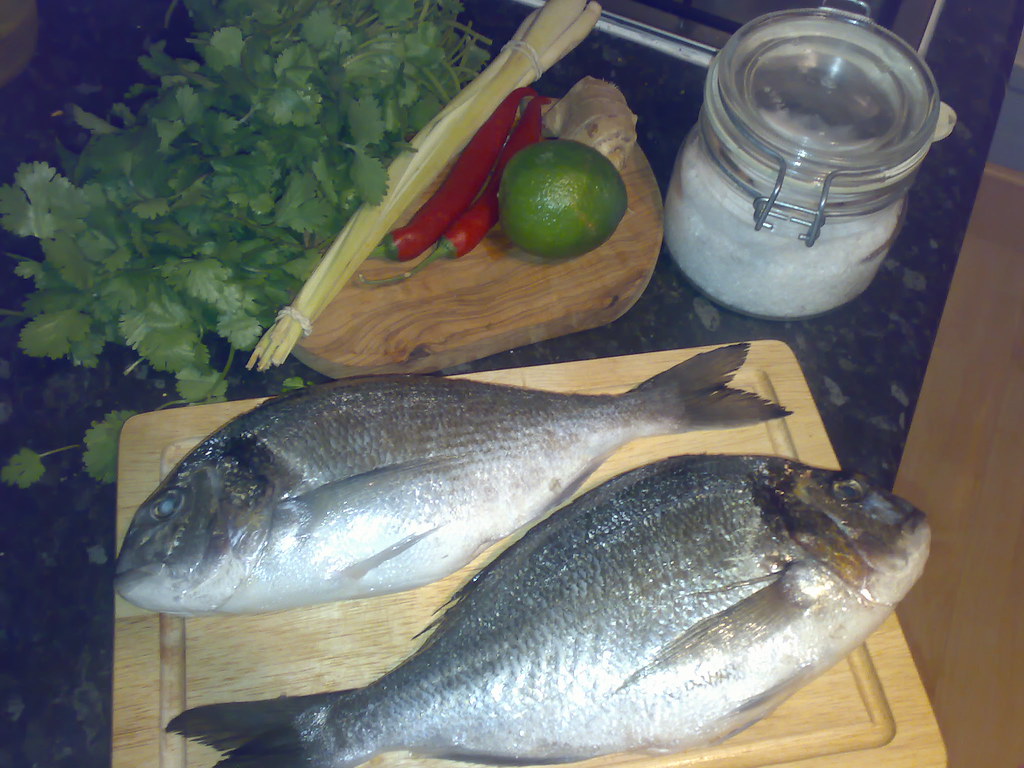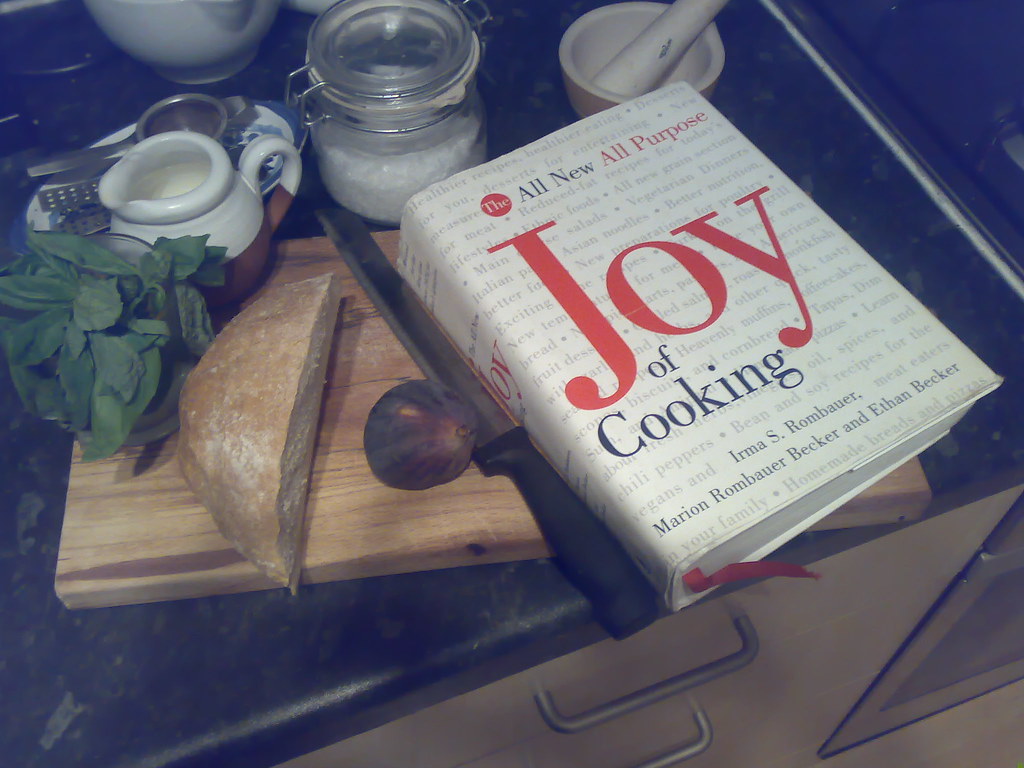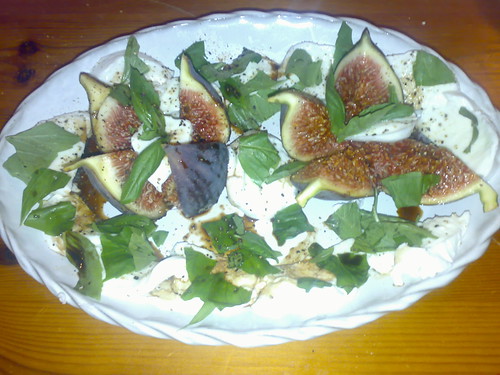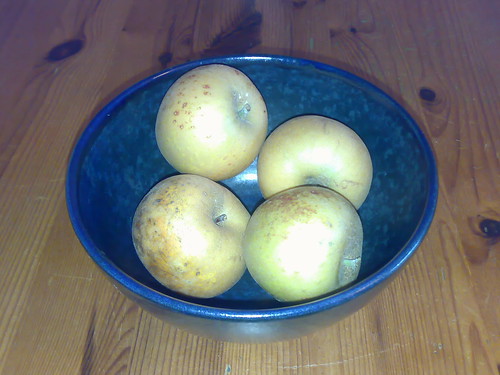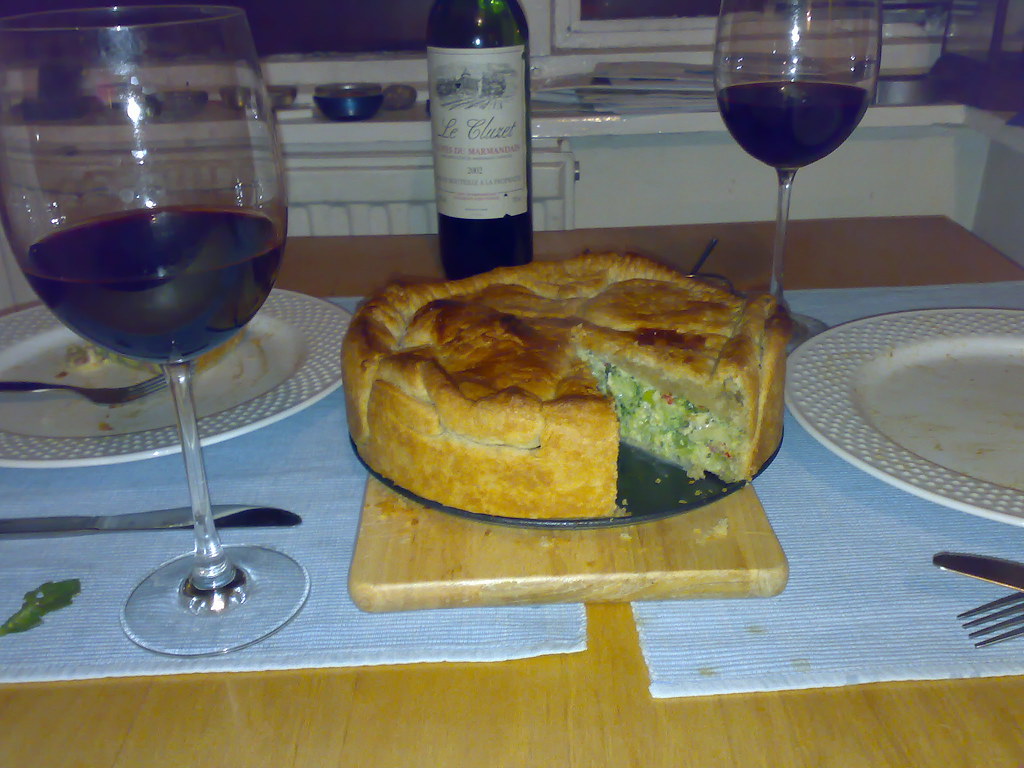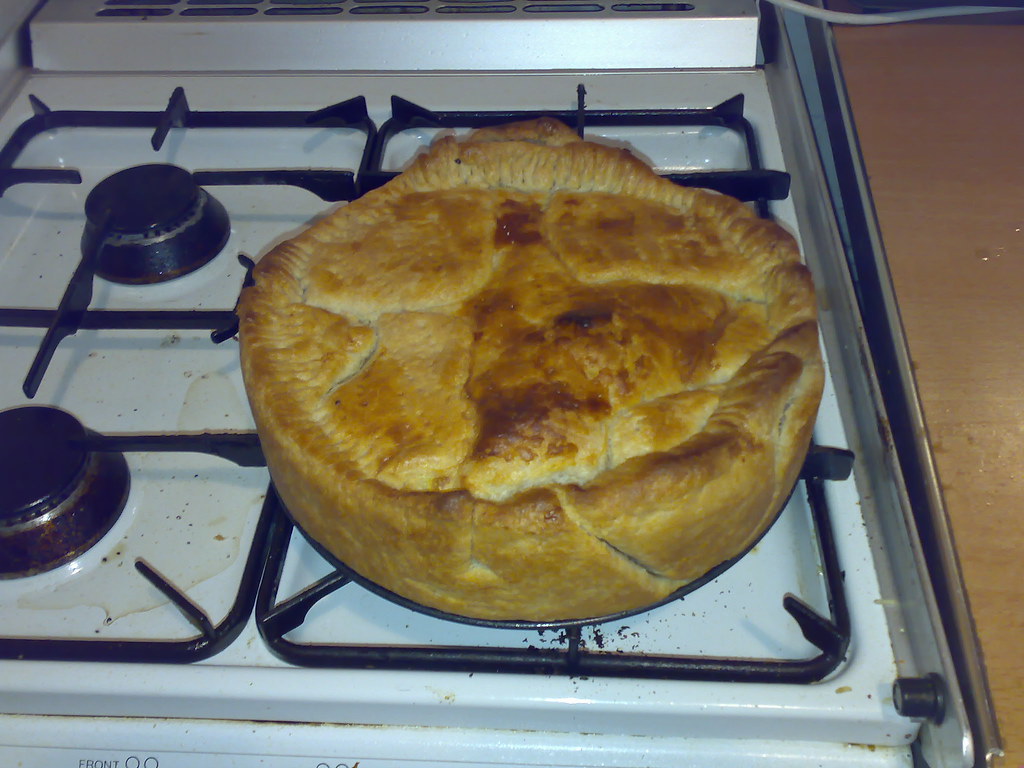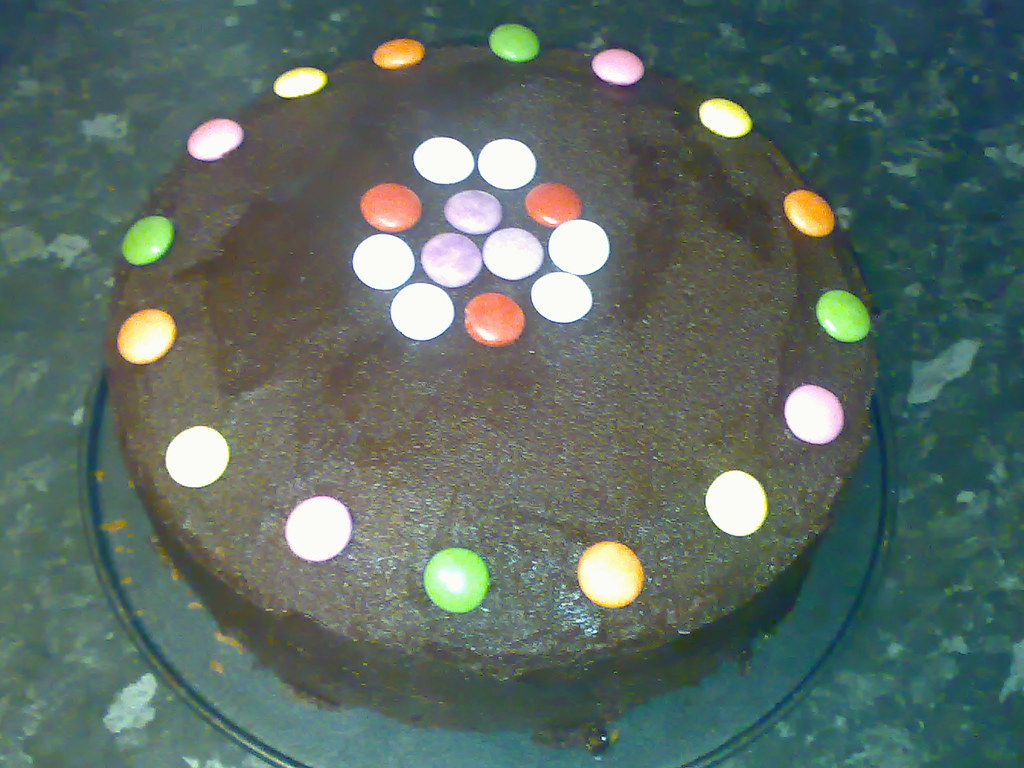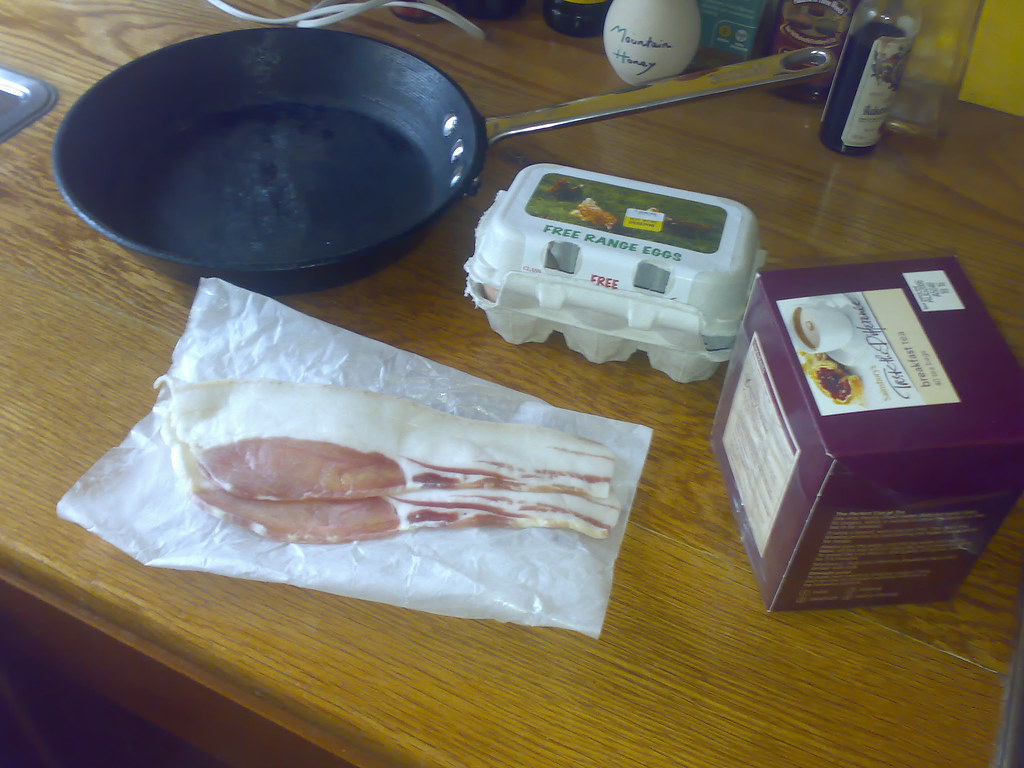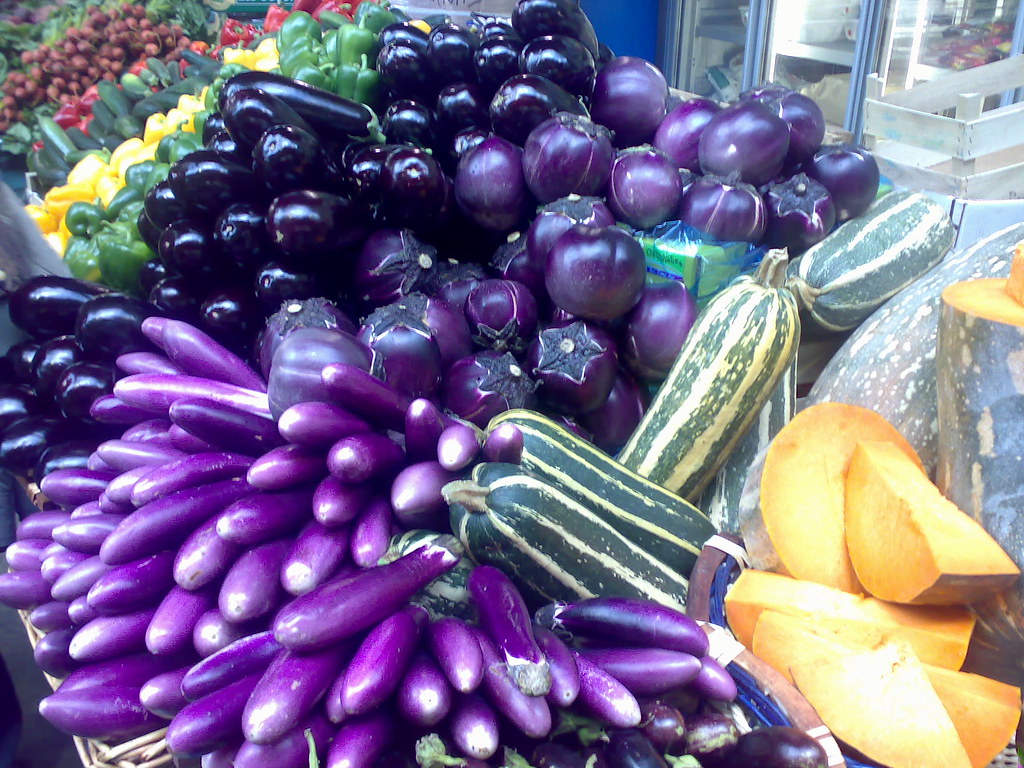
As a teenager I maintained a feverish correspondance with a friend that involved all sorts of games about decorating the envelopes in various ways.
At one point she unearthed a collection of vegetal poems that made their way to me, one on the back of each letter. I have forgotten them all, but the image of the glamourous aubergine in its purple zootsuit lingers.
As an adult I have managed to calm my passion for purple clothing but a fondness for the enigmatic aubergine remains.
It’s an odd vegetable, beautiful when whole but distinctly plain when sliced and cooked, turning into unattractive soggy beige slices. Some people think it has little flavour, but to my palate it is very distinct if unassertive. I love its soft squidginess, finding it comforting and soothing.
Older cookbooks (including Elizabeth David) are stern in their instructions to salt the slices to ‘draw out the bitterness’ but no modern variety I have come across requires this treatment. I have read that this salting treatment, which removes some of the moisture, can make them less sponge-like when it comes to soaking up oil, but then I quite like the greasiness of a slice of aubergine thoroughly drenched in good quality olive oil.
If you want a less fattening way to deal with them, you could cut small aubergines in half lengthwise, then spread miso paste over the cut face and put under the grill.
Baba Ghanoush, that lovely smokey aubergine dip from the middle East, is possibly the best thing to do with your purple beauty.
Roast or grill a whole aubergine until it’s soft (if you have a gas hob, try charring the skin before cooking it for that smokiness); cut it open and scoop out its innards, discarding the skin.
Blend the pulp with tahini, lemon juice, garlic, salt and sesame seeds. The proportions are entirely a question of taste, as is the texture. Experiment with extra ingredients such as cumin, chilli, yoghurt, spring onions, sour cream, oregano, anything you like really.
Serve as a dip or in pita bread.
Mmm. I think I’ll go back to Turnip to buy some aubergines and spend the weekend experimenting.
